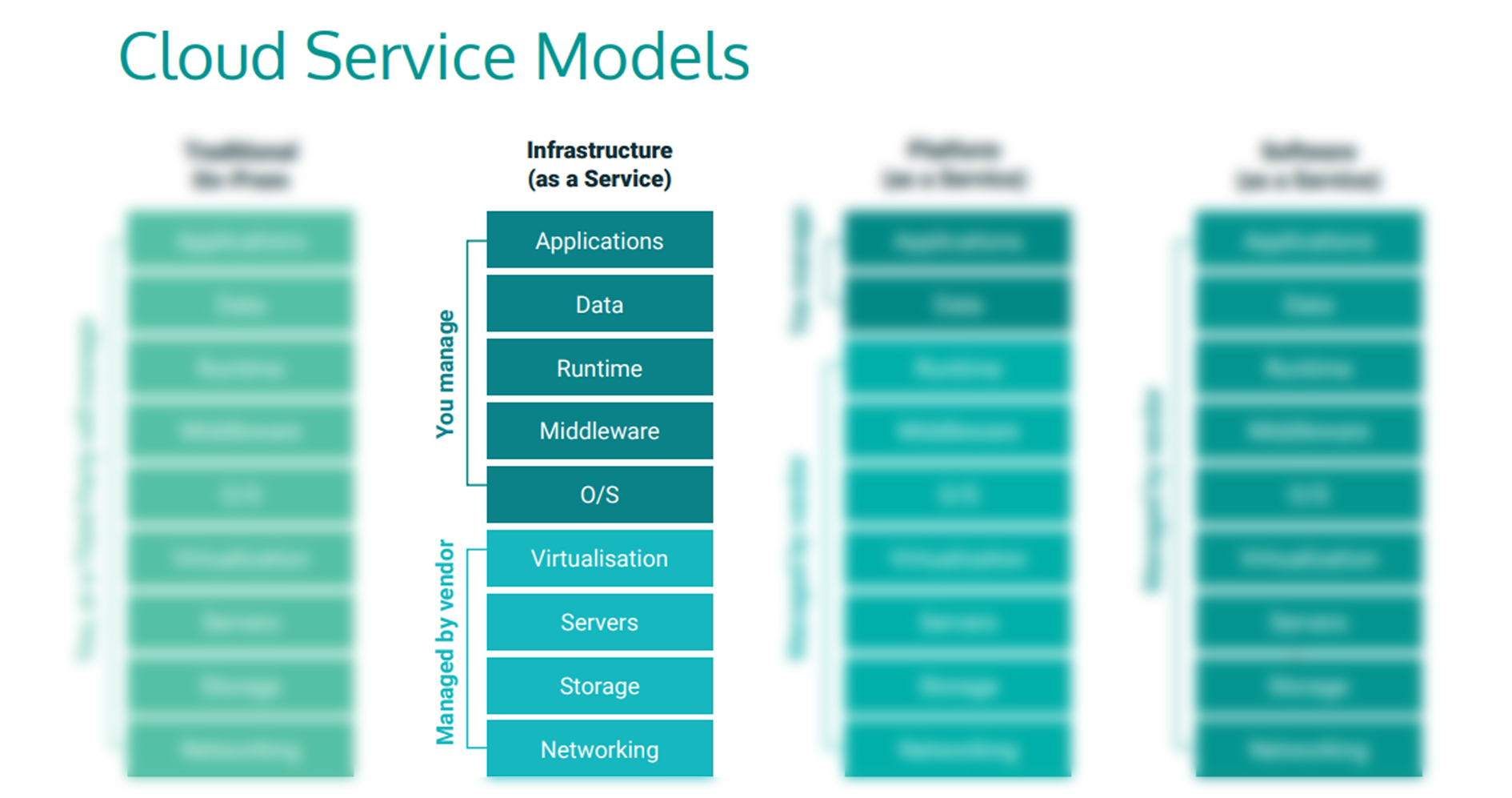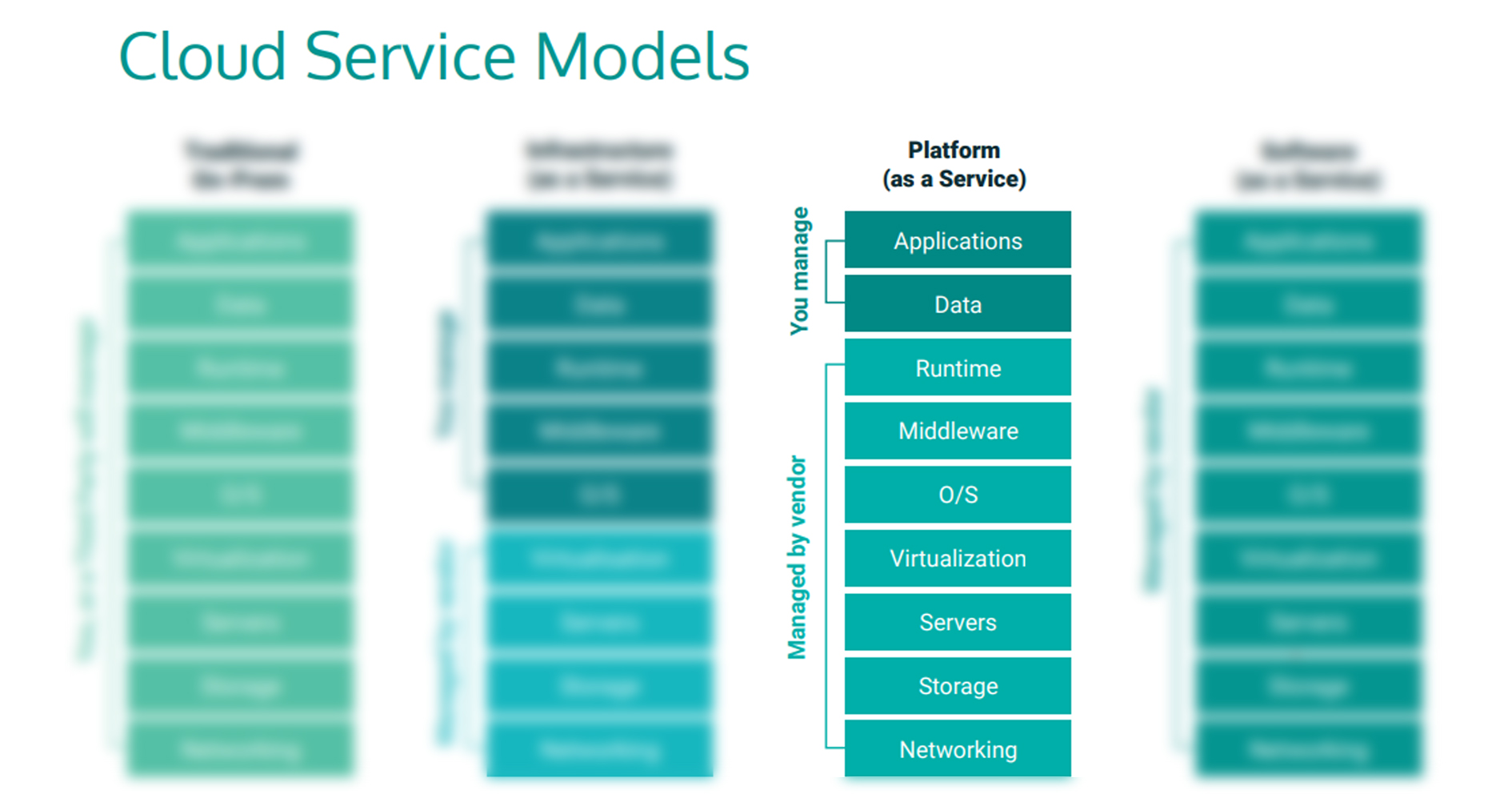Colleagues in Version 1 are...
accessible, constructive and deliver what they say they will, when they say they will.
Read StoryThe Public Cloud is all about trying to minimise the responsibility organisations are tasked with, giving maximum flexibility.
As Public Sector Organisations begin their move to the Cloud they are often faced with the challenge of identifying the best Cloud Service Model for their organisation. A range of Cloud Service Models exists, with differing levels of responsibilities from the organisation’s perspective.
With the computing world now moving to Infrastructure as a Service (IaaS), Platform as a Service (PaaS) or Software as a Service (SaaS), the responsibilities that rest with public sector organisations procuring these services varies significantly.
Organisations are still fully accountable for all aspects of services delivered for applications and data but there are fewer responsibilities to manage overall – further showcasing the benefits of the journey to Cloud.
With lower levels of responsibility, this theoretically simplifies the organisation’s workload to allow more time to focus on higher-value objectives and delivering new and direct value to citizens and stakeholders.
This blog post looks at Infrastructure as a Service (IaaS), Platform as a Service (PaaS) and Software as a Service (SaaS) to help demonstrate which Cloud Service Model may be best-suited to your organisation.
Traditional On-Premise
Before moving to the Cloud, organisations will typically be operating an on-premise model where all responsibilities lie with the organisation. The transition to Cloud will shift from having full and complete responsibility of your own data centre and infrastructure to a shared model of responsibility with the Cloud vendor you choose to work with.
Infrastructure as a Service (IaaS) is a Cloud service where a vendor makes available to all customers slices of shared hyper-scale compute capacity (on a metered basis) which typically consists of servers, network and storage. Cloud-based infrastructure is a cost-efficient alternative to traditional on-premise. Instead of investing in physical hardware users can purchase IaaS on a subscription model based on consumption. Users will still be responsible for establishing and maintaining other components of the technology stack, such as applications and data.
Benefits of IaaS:

When to use IaaS
IaaS is suited to IT administrators who want the maximum level of control (and inherent in this, therefore, responsibility) to deploy varied (typically bespoke or organisation specific workloads) on the underlying infrastructure
Platform as a Service is a service in which a vendor provides a platform allowing customers to develop, run, and manage applications without the complexity of building and maintaining infrastructure. This model, for example, enables development teams to build, test, deploy, manage, update, and scale applications faster and more cost-effectively. The vendor is responsible for the maintenance of the platform. PaaS is easily accessible through any internet connection allowing developers and teams to work from anywhere in the world to build applications.
Benefits of PaaS:

When to use PaaS
PaaS is suited to software and application developers who have a defined development platform for their solution, with a complete platform (with underlying compute, network and storage capacity) supplied and maintained for development by the Cloud provider.
Software as a Service is a Cloud model that provides complete applications to users through the internet, with the service provider responsible for maintaining all aspects of the technology stack and application components. This fully devolves responsibility from the end-users (in this case – the public sector organisation) beyond configuration to their particular business needs (provided through the solution).
As an ‘out of the box’ solution, SaaS products are available on-demand and are easily accessible through an internet connection. The delivery model of SaaS is also very simple, eliminating the need for internal IT staff to set up, download and install applications on individual computers.
Benefits of SaaS:

When to use SaaS
SaaS is ideal for consumers and non-technical end-users due to the lack of technical and development responsibilities and maintenance required. It’s can also be a wise choice for public sector organisations with limited budgets that require a high level of functionality that is already available ‘out of the box’ as a SaaS product. It wouldn’t make a lot of sense financially for a public sector organisation to build a bespoke product for Human Resources when Oracle HCM Cloud is available, or to build a bespoke ERP system when you can easily procure Oracle ERP Cloud.
The best Cloud model for your Public Sector Organisation will be completely dependent on what your organisation needs and what it is trying to achieve.
For example, if your organisation is seeking to implement an HCM or ERP system, the choice of Cloud model will be determined by what is available already ‘out of the box’ from Cloud vendors as a SaaS application.
If your organisation is looking to build a platform for all your data needs upon which to address your unique data analytics requirements, as an example, then PaaS should be considered. The organisation might consider a solution such as Azure Cosmos DB, AWS Dynamo or Oracle’s Autonomous Database, and so on. Base your Cloud model on solving business needs.
Version 1 recommends that Public Sector Organisations, where possible, get as high up the Cloud stack as they can so that they can maximise and accrue the potential greater benefits of Cloud.
Explore our Customer Success Stories below from Public Sector Organisations such as NEL (NHS), Cafcass, the Legal Ombudsman, UoB and Lucy Group to learn more about our Cloud projects and SaaS implementations.